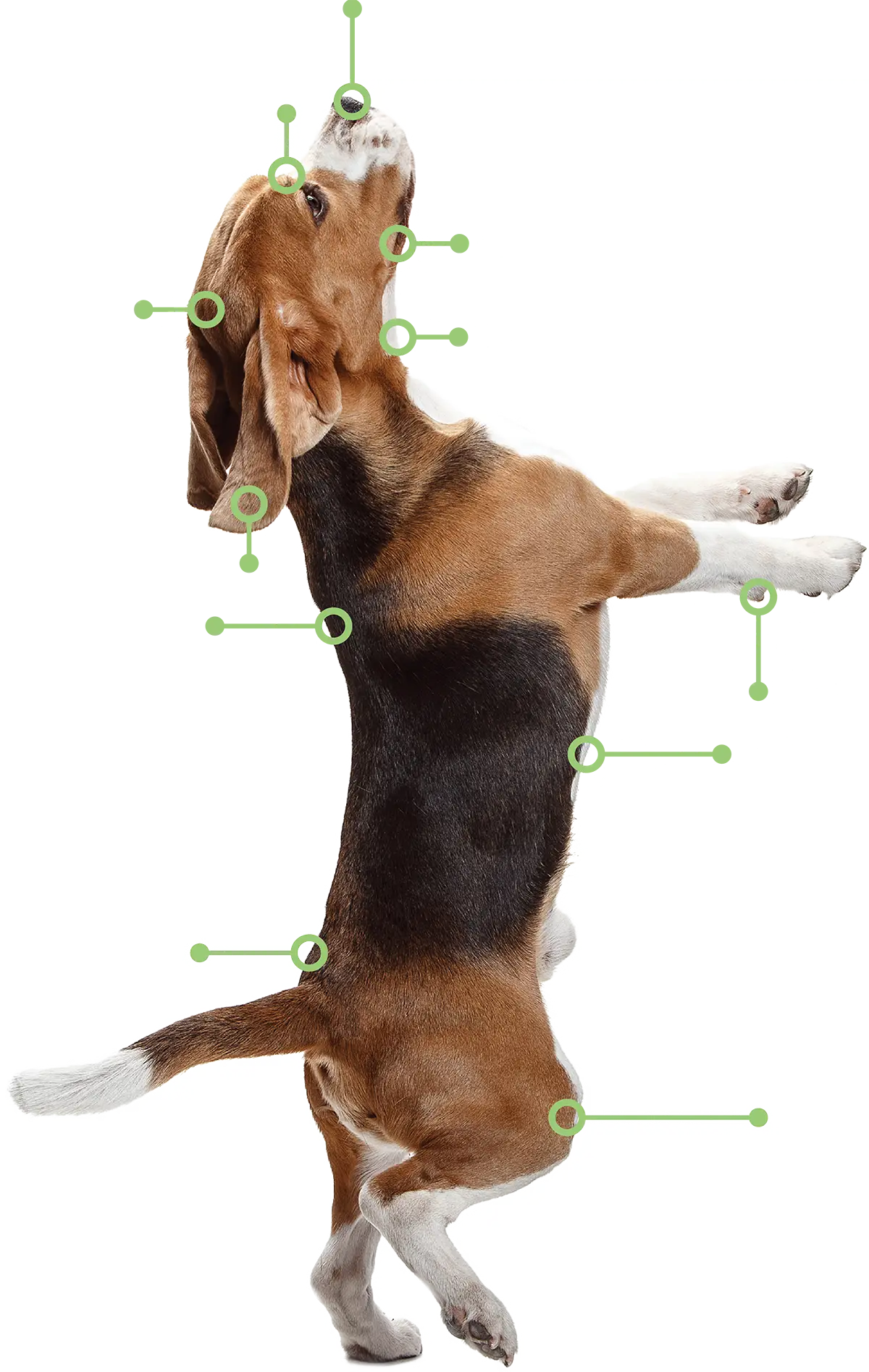


by Daryl Conner
 omeone recently asked on a grooming social media site, “What are the folds on a dog’s lower lips called?” Several people answered that they are called “flews.” Other people said the flews are the upper lips. I wasn’t sure who was right, so I looked it up. Sure enough, the term “flew” refers to a dog’s upper lip structure. The lower lip crease, which can be problematic because it is a warm, moist area that often becomes infected with sore, smelly dermatitis, is called simply a “lip fold.” My reading also informed me that flews are an essential part of the dog’s system to regulate their body temperature.
omeone recently asked on a grooming social media site, “What are the folds on a dog’s lower lips called?” Several people answered that they are called “flews.” Other people said the flews are the upper lips. I wasn’t sure who was right, so I looked it up. Sure enough, the term “flew” refers to a dog’s upper lip structure. The lower lip crease, which can be problematic because it is a warm, moist area that often becomes infected with sore, smelly dermatitis, is called simply a “lip fold.” My reading also informed me that flews are an essential part of the dog’s system to regulate their body temperature.
While learning about the anatomy of canine lips and mouths, I wondered if there were other terms that might be curious or misunderstood. And of course, there were! Following, you will find some anatomical terms that might be unfamiliar, interesting or maybe even part of your daily vocabulary:


Also known as rugal folds, this term describes the ridges on a dog’s lips. Those odd little serrations on the lower lips assist in gripping food and help to keep saliva where it belongs.

Looking at a dog’s nose, you will see it is separated by a fold that bisects the upper lip and area between the nostrils. This is called the philtrum. It retains tiny amounts of saliva when the dog licks its lips and helps the dog capture scent.

Picture a handsome Bloodhound or an adorable Saint Bernard. These are examples of dogs with dewlaps, or extra folds of skin around the neck and throat of a dog. They help the dog collect scent, warm cold air as they inhale and protect delicate organs of the throat when in battle. Breeds that lack dewlaps are referred to as having a “clean throat.”

This is the correct term for the outer ear, also known as the ear flap. A dog’s pinna can move independently and is intended to help the animal hear and offer some protection from the elements to the inner ear.

Did you know dogs have wrists? The lower joint above the front foot on a dog is, indeed, a wrist. It is also called the carpus.

Carpal pad. This is the correct name for that funny little bump that protrudes over the paw on a dog’s front legs. It is coated with skin that is the same texture as paw pads. These pads are used when a dog runs fast, makes sharp turns and stops quickly.

The corresponding joint to the wrist on the rear leg is called the ankle or, more commonly, the hock. This is the lower joint in the hind leg.

The rear leg joint above the ankle or hock is the stifle, also known as the knee.



You may see a flank steak on the menu at a restaurant, but where is a dog’s flank? If you look at the side of a dog, the flank is the area from the end of the rib cage to the beginning of the rear leg, above the belly or abdomen.

Another term closely associated with cuts of meat, the loin is over the flank but also between the last rib, extending to the hip bone.

In the barbeque world, the brisket is a cut of meat from the lower chest of a cow. The brisket is in the same place for dogs, but hopefully will never meet a smoker.

The knobby lump at the back of a dog’s head is the occiput. It is more pronounced in some breeds such as Dobermans, Bloodhounds, Pointers and many Spaniels. The occiput is less evident in toy breeds, especially those with rounded skulls like Yorkshire Terriers. It is colloquially known as a “smart bump” or “knowledge knot.”

Not just a red octagonal traffic sign, a dog’s stop is the indented area between the eyes where the skull and the nose meet.

The nape is the area at the back of the head where the dog’s skull joins the neck.

This term often comes up in the grooming world. The crest is the neck arch extending from the nape to the dog’s withers. In some breeds, we leave extra coat there to create a longer, more elegant neckline.

The withers are the top of the shoulders. This is the tallest point of a dog’s back where they are measured to establish height requirements.

In the human health world, it’s a bad cough that children can get. But it is also another term for the dog’s rump.
As professional groomers and dog lovers, most of us know a lot about canine behavior, skin and coat type and care, grooming tools and products, and the anatomy of the pets we groom. Our customers expect us to be experts on everything, from proper diet to training, so using the correct anatomical terms when discussing pets with your customers reinforces your image as a subject matter expert.
Resources:
www.pawsafe.com
https://nationalpurebreddogday.com/philtrum/
https://www.flickr.com/photos/caninest/4394640467
https://pawsafe.com/blogs/dog-dental/do-dogs-have-lips
https://nationalpurebreddogday.com/dewlaps-they-have-a-purpose/
https://pethelpful.com/dogs/Whats-the-Purpose-of-Your-Dogs-Carpal-Pads
https://orthodog.com/article/dog-leg-anatomy/
https://www.dummies.com/article/home-auto-hobbies/pets/dogs/health-grooming/dog-anatomy-from-head-to-tail-197577/
www.pawsafe.com
https://nationalpurebreddogday.com/philtrum/
https://www.flickr.com/photos/caninest/4394640467
https://pawsafe.com/blogs/dog-dental/do-dogs-have-lips
https://nationalpurebreddogday.com/dewlaps-they-have-a-purpose/
https://pethelpful.com/dogs/Whats-the-Purpose-of-Your-Dogs-Carpal-Pads
https://orthodog.com/article/dog-leg-anatomy/
https://www.dummies.com/article/home-auto-hobbies/pets/dogs/health-grooming/dog-anatomy-from-head-to-tail-197577/


